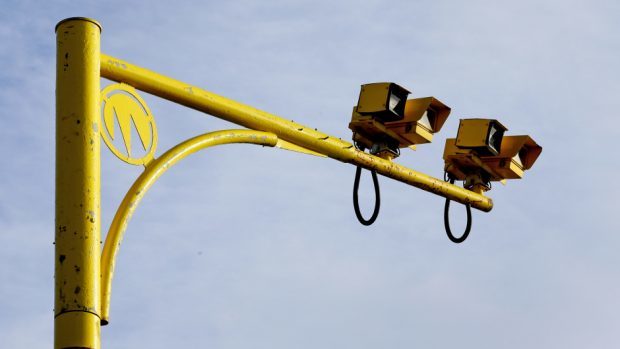Speed cameras could be put in place on the Aberdeen Bypass, the Transport Minister has revealed – three years after Transport Scotland said there were “no plans for average speed cameras” on the route.
In 2017, during the construction of the Aberdeen Western Peripheral Route (AWPR), the government agency insisted it had no intention of installing the controversial camera system, sometimes referred to as “yellow vultures”, on the new bypass.
At the time, the government was accused of sending mixed messages, as a £2 million average speed camera network was being installed on the nearby A90 Stonehaven to Dundee route.
Earlier this week, in response to a question in the Scottish Parliament from North-East Conservative MSP Tom Mason, Transport Minister Michael Matheson said it is a possibility that safety cameras – which includes the potential for average speed cameras – could be brought to the AWPR if deemed necessary.
He told Mr Mason: “An annual safety camera site prioritisation process is undertaken to determine new safety camera sites across our road network.
“If the 2020 process identifies the AWPR as meeting minimum site selection requirements, a safety camera deployment will be considered.”
Mr Mason had asked the minster about what action the Scottish Government is taking to reduce speeds on the AWPR.
Earlier this month it was revealed 271 speeding offences on the bypass had been reported by the police since it opened 18 months ago.
He said that with the frequency of incidents recorded by police on the AWPR, it is “clear this is a problem area”.
Mr Mason has appealed for a wide variety of speed-reducing measures to be considered, arguing that average speed cameras have made “little difference” to the reduction of dangerous driving on the nearby A90 between Stonehaven and Dundee.
He said: “I fear it may only be a matter of time until someone is seriously injured or worse.
“The Scottish Government can’t keep dragging its feet on the issue, which is why all possible safety measures need to be looked at – and not just average speed cameras.”
Last month, freedom of information data revealed the number of accidents in the 26 months after the average speed cameras were put in place on the A90 had actually increased, compared to the 26 months before.
Collisions classified as “serious” went from 20 to 21, while injuries graded as serious increased from 27 to 28. The number of deaths rose from three to five during the time frame.
Neil Greig, policy and research director at the road safety charity IAM Roadsmart, formerly the Institute of Advanced Motorists, said: “Average speed cameras are a very effective, but also very expensive, deterrent on roads with a proven speeding problem.
“IAM Roadsmart has no doubt they would be successful on the AWPR in the same way as they have proven to be on the A9 and the A90 south of Aberdeen.
“However, we would normally expect Transport Scotland to have several years of ‘before’ data on a route before they propose a measure such as this so that its success can be fully evaluated.
“Speeding does seem to be an issue on the AWPR, but it is still a very new road and it may take time for traffic patterns and drive behaviour to settle down.”
A spokesman for Transport Scotland said road safety was of “paramount importance” to the Scottish Government and argued there have been relatively few incidents of speeding recorded by the police.
He said: “Since August 2018, there have been 271 speeding offences recorded on the AWPR – the equivalent of 0.5 offences per day.
“With Police Scotland, we embrace a partnership approach to issues surrounding driver behaviour and we engage regularly with our partners to identify what additional mitigation measures may be appropriate in specific circumstances.”
